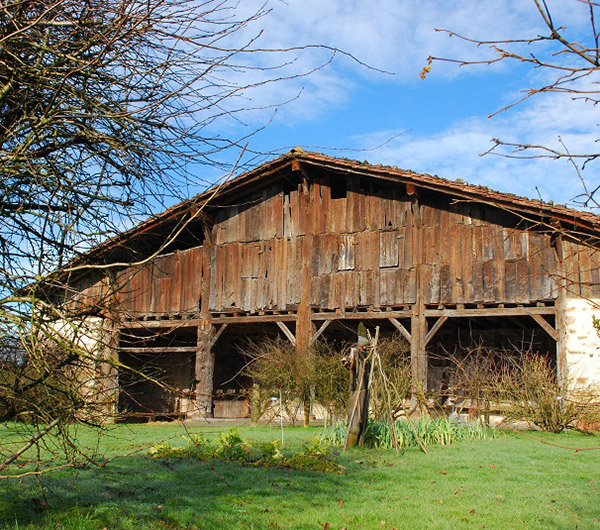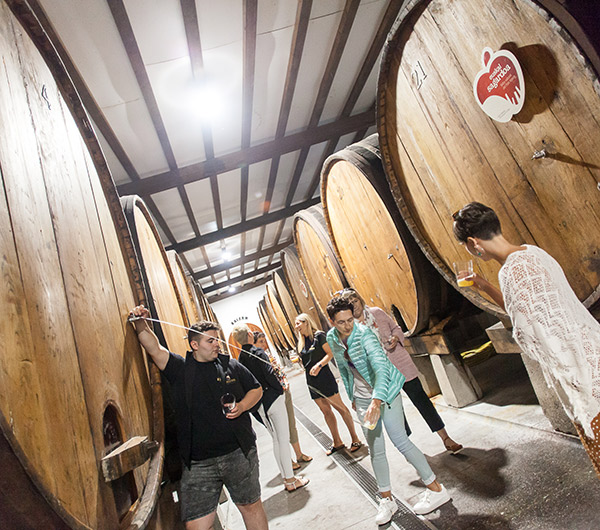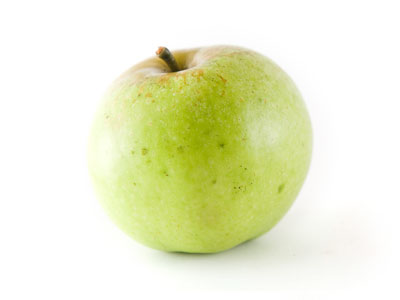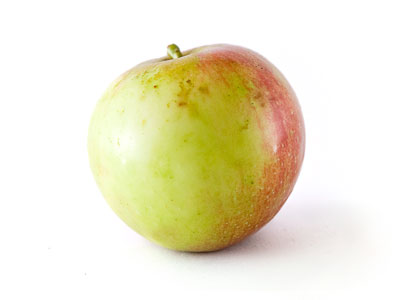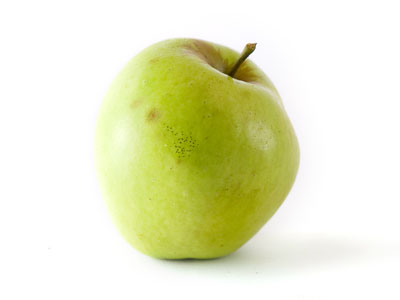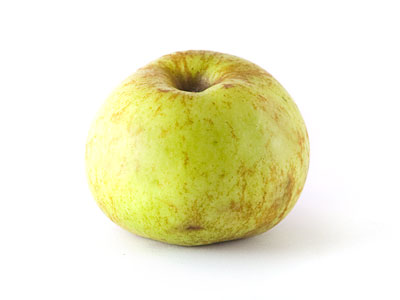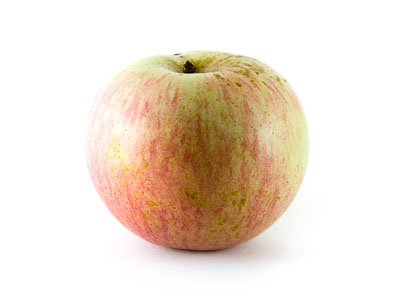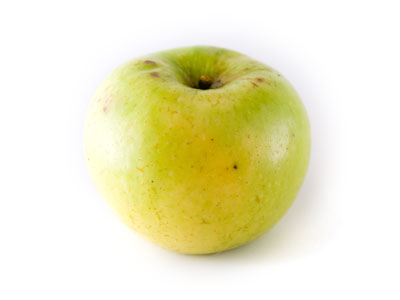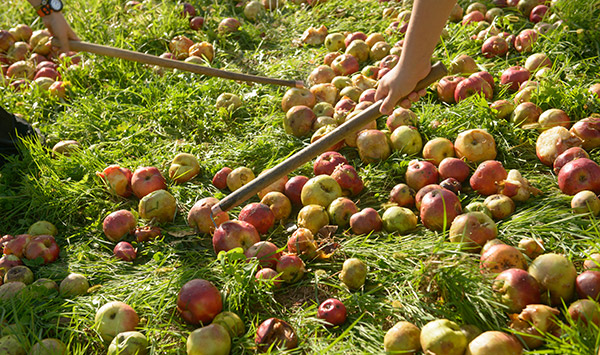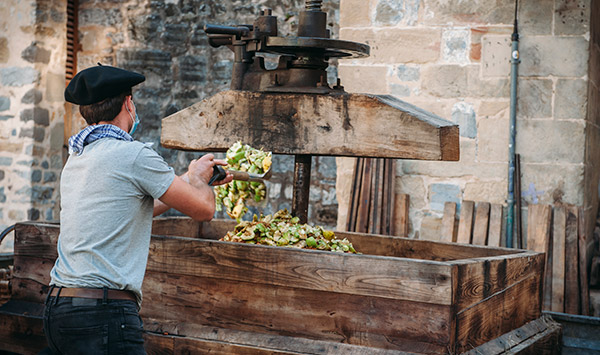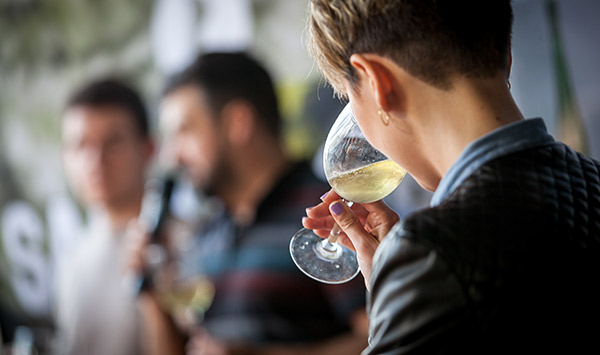
Designation of Origin
Basque Cider
Quality cider made
100% with local apples
Cider from the Basque Country
With every sip of cider, we drink a little piece of our history.
Cider has a millennia-old history in the Basque Country, although it is impossible to determine exactly when and how the ancient Vascones began to make it. What is certain is that, for centuries, cider has been the most widespread drink throughout the territory, as well as an essential staple in the diet of Basque families. The oldest documents and mentions are collected in the extensive book La Sidra by José Uria Irastorza. There are various theories about how and when the apple was introduced into our territory. The remains of carbonized apples found in caves along the Cantabrian coast show that this fruit was already domesticated in the Neolithic and formed part of the diet of the ancient Basque inhabitants. The Greek geographer Strabo already referred to pitarra—a drink made with boiled apples, honey and water—in Basque lands. Later, during the medieval pilgrimages to Santiago de Compostela, Aymeric Picaud described Euskal Herria as “of a barbarous tongue, mountainous, poor in wine, meat and food, which they make up for with apples, cider and milk.” Even the inquisitor Pierre de Lancre, in a disparaging tone, wrote that Basque women “ate apples and drank cider, the devil’s elixir.” These are some of the historical references we currently have in the Basque cider sector.
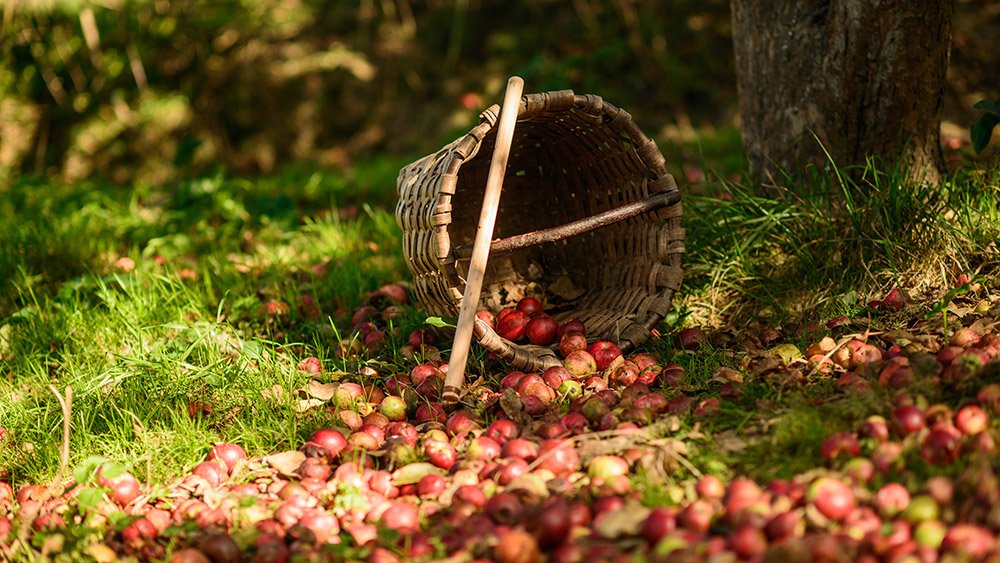
Raw material
The apple is the great treasure of the Basque Country’s cider sector. Over thousands of years, local varieties have been refined thanks to the know-how of the baserritarras, the producers who have kept this tradition alive generation after generation.
Today, it is estimated that there are more than a thousand varieties of apples used for cider making. The Euskal Sagardoa Designation of Origin authorizes the use of 106 varieties, classified as acidic, bitter and bitter-acid.
The careful selection and combination of these varieties is where the secret of a good cider begins: the balance of flavors, aromas and nuances that gives each cider house its own personality and makes Basque cider a unique product.
Discover the types of apple
Production process
Quality to enjoy all year round
Cider making begins in early September with the selection and harvesting of apples. This process continues until the end of November, when the latest-ripening varieties arrive at the cider houses. Once received, the apples are pressed, initiating their transformation in the cider houses. The juice obtained is placed in kupelas (barrels made of wood or stainless steel), where fermentations develop —alcoholic and malolactic—among other natural processes that determine the cider’s final character. From January to the end of April, cider can be tasted “at the txotx,” directly from the kupela in the cider houses, as tradition dictates. Afterwards, once bottled, it is available to be enjoyed all year long, not only in the Basque Country but also in an ever-growing number of places worldwide. The sector is working on exporting cider to other countries.
Stages of the production process
Quality of Natural Cider
Quality to enjoy it all year round.
Natural cider is characterized by its authentic, balanced flavor, the result of a careful process of selecting apples, pressing, fermentation and bottling. Thanks to these traditional techniques combined with modern preservation methods, the cider maintains its freshness, aroma and unique nuances throughout the year, offering consumers a consistent, high-quality experience with every tasting.

Characteristics
The product has well-defined physicochemical characteristics, with an alcohol content between 5 and 6%, a total sulfur dioxide content of less than 100 mg/L, and a volatile acidity of less than 2.2 g/L. It contains endogenous carbon dioxide and no added sugars. From a microbiological standpoint, the absence of pathogenic microorganisms and toxins is guaranteed, ensuring its safety. It is available in various packaging formats, 75 cl bottles (cases of 12, 6, or 3 units), 33 cl bottles (cases of 24 or 12 units), 3 and 5-liter Bag-in-Box containers, and 44 cl cans.
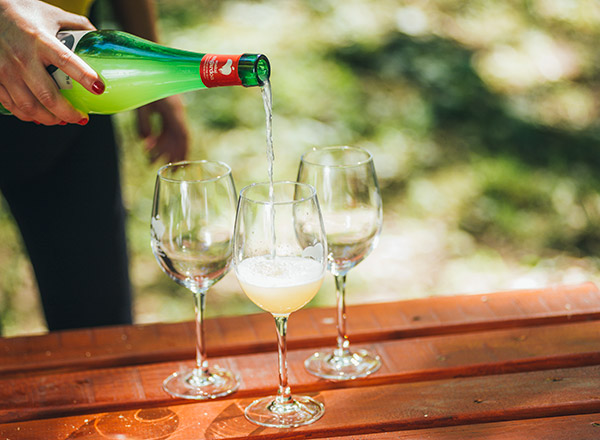
In a wide glass or a wine glass
It is recommended to store cider in a cool place, as temperatures that are too high or too low can affect its properties and flavor. To serve, the ideal is to pour from a height of 5 to 10 cm, which allows for a leisurely sip and lets you fully appreciate the apple’s aromas and nuances.Cider is best served in a wide glass or in a wine glass, which enhances its aromatic qualities and facilitates tasting. It pairs perfectly with any type of dish and, thanks to the diversity of ciders available today, is a versatile product suitable for all kinds of consumers—ideal to enjoy all year round.
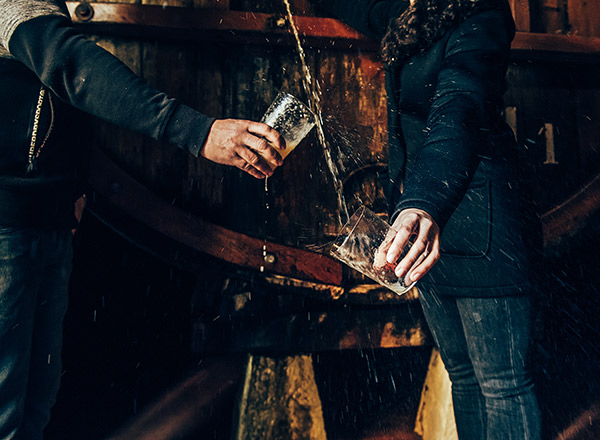
Enjoy cider at the Txotx
Pour the cider directly from the kupela into your glass or wine glass to enjoy its txinparta (sparkle). Serve only the amount you are going to drink in one sip, since pouring breaks the aromas and the cider’s txinparta. Pair it with a traditional cider-house menu and combine it with other typical dishes served in our cider houses. The Txotx season runs from January to the end of April, although more and more cider houses remain open throughout the year to offer this unique experience. Nowadays, guided tours are offered to learn more about the story behind each family.



